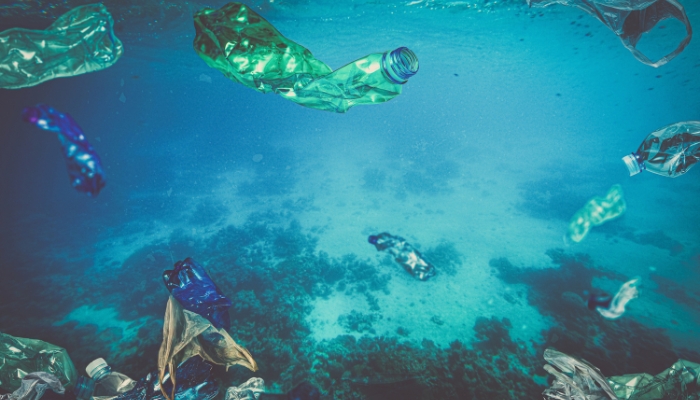Science & Environment
Reducing Plastic Waste: How the U.S. Aims to Make a Difference

- The U.S. strategy targets plastic production, product design, waste management, to phase-out of single-use plastics by 2035.
- It promotes setting standards for microplastics and encourages extended producer responsibility laws to make companies accountable for plastic waste.
- A key omission in the plan is a cap on plastic production, despite concerns about the projected doubling of global plastic output by 2040.
Plastic waste is piling up all around the world at an alarming rate. According to the World Bank,an average person generates roughly 1.6 pounds (0.74 kilogrammes) of plastic garbage per day. To address this rising issue, 175 countries are working on a worldwide treaty to manage plastic pollution, with the goal of finalizing it by late 2024. In a significant move, the Biden administration announced the first U.S. strategy to combat plastic waste in July 2024.
This new U.S. approach focuses on five major areas:
- Plastic manufacture
- Product design
- Waste generation
- Waste management
- Plastic capture and removal
Federal agencies are now taking efforts to reduce plastic pollution throughout the country. Here’s a closer look at three key ideas from the plan, as well as one significant issue that needs further consideration.
Setting Standards for Microplastics
Microplastics—tiny plastic particles—are appearing everywhere, from the air we breathe to the water we drink, and even in the food we consume. While we know that these particles can harm wildlife such as seabirds, scientists are still investigating how they affect human health. Microplastics vary in size and shape, and they can be found in a variety of locations, which contributes to the issue. This makes it difficult to investigate their impact on humans.
Right now, there is no government standard for measuring microplastics in the United States, so researchers employ diverse definitions and methodologies, resulting in conflicting results. California has already begun working on this issue, initiating a program in 2023 to monitor microplastics in drinking water and create standardized testing procedures.
The present administration intends to develop national standards for measuring microplastics and even smaller particles known as nanoplastics. With new standards in place, scientists can collect more reliable data, allowing regulators to set safe limits for microplastics in our food, water, and air.
Holding Producers Accountable
Most plastics are created from chemicals that impart specific features such as flexibility, color, and durability. However, some of these chemicals, such as bisphenols and phthalates, have been associated with major health problems, including reproductive disorders and cancer.
Despite these concerns, most plastic garbage in the United States is regarded as conventional trash, with just about 5% recycled. The remaining waste is either burnt or buried in landfills. This has resulted in increased requests for “extended producer responsibility” (EPR). In brief, EPR regulations hold firms accountable for what happens to their products after we’ve used them, encouraging them to design more environmentally friendly items and promote recycling.
Several states, like California and Oregon, have already adopted EPR regulations for plastics, and more are considering doing so. The government’s strategy supports a national EPR program, allowing states and local governments to set their own standards while striving for a more unified system throughout the country. Federal assistance might help speed up the implementation of EPR rules, requiring plastic companies to assume more responsibility for waste management.
Single-use Plastics Are Being Phased Out
Single-use plastics, such as shopping bags, food wrappers, and bottles, contribute significantly to the problem because they are used just once and then discarded. These are some of the most frequent polymers that pollute the environment.
The strategy addresses this issue by stating that by 2035, the federal government will no longer purchase single-use plastic. While this only applies to federal agencies, it is a significant move given that the United States government is the world’s largest buyer of products and services. This could increase demand for more sustainable options, encouraging other industries to follow suit.
What is Missing: A Cap on Plastic Production
A cap on plastic output is a significant gap in the United States’ policy. Experts predict that by 2040, plastic output might quadruple, adding to the planet’s garbage. Some countries, such as Norway and Rwanda, are advocating for a global limit on how much plastic we manufacture as part of international treaty negotiations.
In early 2024, some countries advocated reducing global plastic production by 40% below 2025 levels by 2040. However, plastic makers contend that a cap would raise prices for all plastic products. Instead, they push for alternatives such as boosting recycling rates and incorporating more recycled materials into production.
Given the size and strength of the United States’ plastics industry, it seems unlikely that the country will support a global restriction on output. However, there are domestic initiatives, such as the Break Free From Plastic Pollution Act, which seeks to temporarily halt permits for new plastic manufacturing sites. This could be a step towards curbing plastic manufacture in the United States, even if global action lags.
Moving Forward to a Cleaner Future
The United States’ initiative to combat plastic pollution is a positive start. The UK is taking significant strides to decrease its plastic footprint by establishing microplastic standards, holding producers accountable, and eliminating single-use plastics. However, without tackling the spike in plastic manufacture, these initiatives may fail to solve the problem in the long run.
As negotiations for the global convention proceed, the United States will have to decide how vigorously it wants to combat plastic pollution. For the time being, the national strategy establishes the basis for change; but, stronger efforts will be required to truly protect our planet from the plastic issue.

















































